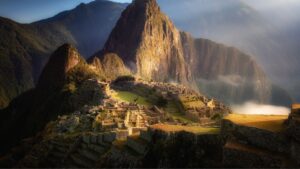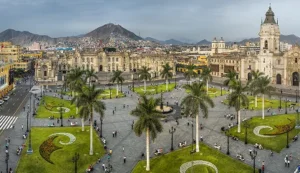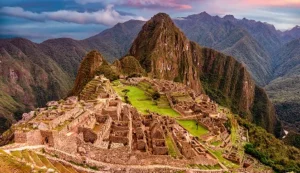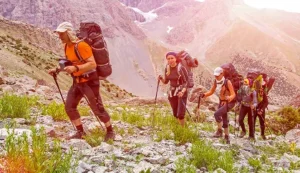Standing as one of the New Seven Wonders of the World, Machu Picchu is a monument of ancient civilization and has captured the imaginations of travelers globally. For those planning an expedition to this iconic Peruvian site, a guided tour often serves as the best way to experience its full splendor. In this comprehensive guide, we delve into what a Machu Picchu guided tour includes, ensuring a trip that is both enriching and unforgettable. Supported by detailed insights and credible sources, this article will guide you through the essential components of such tours.
Understanding the Significance of Guided Tours to Machu Picchu
Machu Picchu is not only a symbol of the Inca Empire but a masterpiece that encapsulates an advanced architectural feat in the heart of the Andes Mountains. Recognizing the historical and cultural significance of this sacred site, guided tours often serve as a bridge between travelers and the deep history that lays within its ruins. In addition to providing structured itineraries, guided tours ensure that visitors gain insightful narratives backed by archaeological evidence.
For those looking to design a trip around personalized interests, check out our custom vacation packages.
What to Expect from a Guided Tour?
Opting for a guided tour to Machu Picchu involves a meticulous plan encompassing travel arrangements, accommodations, guided visits, and often meals. Each component is designed to amplify the visitor experience. But what aspects are included in a standard package?
Tour Components
| Component | Details |
|---|---|
| Transportation | Includes train tickets, buses to and from Machu Picchu, as well as transfers from airports if necessary. |
| Accommodations | A range of lodging options from budget stays to luxury hotels, often situated in nearby towns like Aguas Calientes or Cusco. |
| Guided Visits | Educational tours conducted by certified guides, fluent in multiple languages, who offer insights into the history and architecture of Machu Picchu. |
| Meals | Meals are often inclusive, ranging from breakfast spreads at hotels to traditional Peruvian cuisine. |
Detailed Travel Logistics
A guided tour efficiently manages the logistics of traveling to Machu Picchu, primarily due to the remote location and the layered permissions required. From coordinating with local transport services to obtaining the necessary permits, tour operators streamline the travel experience to ensure everything runs seamlessly.
The Role of Expert Guides
Expert guides are integral to the quality of the tour. They possess deep know-how, delivering narratives that contextualize each structure within Machu Picchu. They offer rich stories about its past, leveraging research backed by credible archaeological studies to provide accurate and trusted information.
Accommodations and Comfort
To enhance the comfort of travelers, tours often feature a range of accommodation options. Whether travelers are seeking budget-friendly lodges or high-end luxury resorts, guided tours present choices to fit all preferences. According to data, approximately 64% of visitors opt for mid-range accommodations, offering a balance between comfort and cost.
Permits and Entry Fees
Entry fees and permits are typically included within the guided tour packages. Given the regulated access to preserve the site’s integrity, these permits are essential. Statistics reveal that during peak seasons, permits are often sold out weeks in advance, emphasizing the benefit of prearranged tours where such circumstances are accounted for.
Group vs. Private Tours
Travelers have the option between group and private tours. Group tours are generally more economical, while private ones offer personalized experiences. Surveys indicate that about 70% of travelers choose group tours due to the social experience and cost-effectiveness, while private tours are chosen by those desiring a tailored approach.
Sustainable Tourism Practices
Guided tour companies are increasingly adopting sustainable tourism practices, often partnering with local communities to offer eco-friendly alternatives. This approach helps conserve Machu Picchu’s ecosystem while promoting responsible tourism. Transforming tourism practices positively impacts communities and preserves the heritage for future generations.
Learn more about what to do in Peru beyond Machu Picchu and explore cultural sites, cuisine, and landscapes across the country.
Exploring the Inca Trail
For the adventurous, trekking the Inca Trail to Machu Picchu forms an immersive part of the guided tour offerings. This four-day trek invites keen explorers to traverse the ancient pathways, where they can behold some of the most breathtaking landscapes across the Andes. Measures are taken to ensure the trail’s preservation, with only a limited number of trekkers allowed per day.
Culinary Experiences
The dining experiences included in a guided tour provide a rich exploration of Peruvian cuisine. Often featuring traditional dishes crafted from local ingredients, visitors are given a taste of the diverse gastronomy that Peru is famed for. This culinary inclusion adds a layer of cultural depth to the tour.
Cultural Immersion
Lastly, enrichment through cultural immersion is an integral component. Tours often include visits to local artisan markets and nearby villages, where travelers can engage with the vibrant cultures of Peru. These interactions offer firsthand insights into local traditions and enhance the overall experience of visiting Machu Picchu.
Key Takeaways: Looking Forward
Machu Picchu guided tours stand as a meticulously curated way to experience one of the world’s most astonishing archaeological sites. They offer an educational and comfortable travel package that not only benefits the traveler but supports sustainable tourism initiatives. As travel booms, especially in the United States market, the efficacy of guided tours may serve as an anchor in maintaining cultural and environmental preservation around Machu Picchu. For those keen to delve into this Peruvian wonder, a full-spectrum guided tour remains the preferred choice to maximize both understanding and enjoyment of this iconic location.
FAQs
Q: Is a guided tour to Machu Picchu worth it?
A: Yes, a guided tour to Machu Picchu is highly recommended. A guided tour simplifies travel logistics, includes all necessary permits, and provides expert insight into the site’s history, enhancing the overall experience. Additionally, expert guides offer educational narratives that highlight the significance of Machu Picchu’s construction and the Incan civilization. When considering Machu Picchu’s remote location and the requirement of permits, a guided tour reduces hassle, making it a worthwhile investment for a memorable experience.
Q: What is the best time to visit Machu Picchu?
A: The best time to visit Machu Picchu is during the shoulder months of April to May and September to October. During these times, the weather is relatively dry, and the influx of tourists is lower compared to the peak months of June to August, which coincides with the Peruvian winter. During the peak season, the site can be crowded, leading to a less intimate experience. It is also important to note that the Inca Trail is closed in February due to heavy rainfall, which can impact the trekking experience.
Q: Do I need to be physically fit to visit Machu Picchu?
A: While a reasonable level of fitness is required, especially if trekking the Inca Trail, visiting Machu Picchu itself does not necessitate advanced physical fitness. Most guided tour packages offer options that suit various fitness levels. Those opting for the train-and-bus route to the site generally only need to manage the altitude. However, travelers should prepare for steps and irregular terrain while exploring the ruins. Visitors are advised to acclimatize and stay hydrated to mitigate the effects of altitude sickness.
Q: How long should I spend at Machu Picchu?
A: The time spent at Machu Picchu can vary depending on individual preferences, but a minimum of one full day is generally recommended to explore the site thoroughly. Most guided tours are structured to include a day of exploration at Machu Picchu, often allowing time for photography, guided listening, and personal exploration. For those combining their visit with the Inca Trail, a longer duration of four to five days may be necessary to complete the trek and explore Machu Picchu adequately.
Q: Are there any restrictions for visiting Machu Picchu?
A: Yes, to preserve the integrity of Machu Picchu, there are restrictions and regulations in place for all visitors. There are designated walking routes, and visitors are not allowed to enter with large backpacks, tripods, or drones without prior permission. It is essential to follow designated pathways and listen to the guides’ instructions to minimize environmental impact. Moreover, permits have daily quotas, and it is important to book well in advance, especially if planning to trek the Inca Trail, as slots fill up quickly.
For more information and travel planning, visit the official Peru travel portal at https://peru.org/.

Why Book with a Peru Travel Agency? Pros, Cons, and Tips

What’s Included in a Machu Picchu Guided Tour? A Complete Breakdown

Top 5 Must See Destinations in Peru for Every Traveler

How to Prepare for a Trek to Machu Picchu: Tips for First Timers

A Guide to Experiencing Peru’s Unique Culinary Delights

What’s Included in a Machu Picchu Guided Tour? A Complete Breakdown
Standing as one of the New Seven Wonders of the World, Machu Picchu is a monument of ancient civilization and has captured the imaginations of